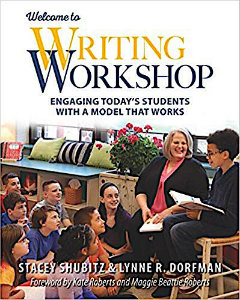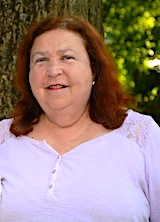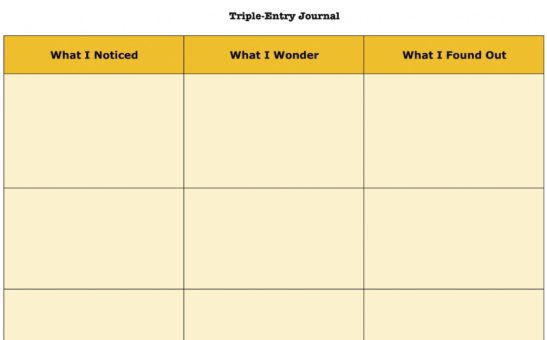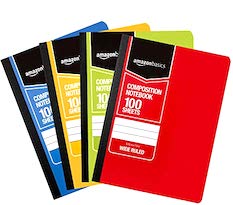Content-Area Writing Is “Thinking Written Down”
How can we help our writers learn to think in more disciplined ways, across the curriculum? Writers make choices, make changes, and make meaning. Writers are decision-makers. Writing, in fact, is the most disciplined form of thinking.
Writing is a powerful tool for thinking aloud on paper, as William Zinsser described in his 1993 classic Writing to Learn. It helps students work their way into a subject to make it their own.
What is Writing in the Content Areas?
Writing in science, math and social studies class is very different from writing in ELA classrooms. Writing is “thinking written down” and multimodal – a powerful tool to help students learn how artists, mathematicians, musicians, scientists, and historians think (Fernsten, 2007). It’s more than grammar and punctuation.
Writing activities do not always have to culminate in finished products to be useful. A lot of writing is informal – its purpose is reflective thinking. Teachers in content areas need to take some time to understand the writing process because it affects teacher expectations and our teaching in five important ways:
- There will be a great deal of variability among your student writers in terms of confidence, abilities, styles, and approaches.
- Process-oriented teachers know students need regular and frequent practice in a variety of writing types (modes).
- Content-area teachers who use writing successfully as a learning tool emphasize the writing process in their assignments and instruction – providing time for conferencing and support in the early stages.
- The more teachers know about process, the more they understand that writing is hard work!
- These teachers will emphasize content over the form. They respond primarily to the meaning in students’ writing and view the mechanics as secondary (but important for clarity and organization).
Often, in content area classrooms, writing is another tool for learning – a means to an end – informal and “unfinished” but done with powerful purpose. The teacher is not expected to grade everything. Its value? To give the writer the opportunity to look back and trace changes and development in learning and thinking.
Learning logs, admit and exit slips, and triple entry journals give students the opportunity to use writing to process new information, making connections with pre-existing knowledge, and making accommodations when needed. This kind of writing helps us learn, remember and reflect in subjects across the school curriculum.
Five Elements to Consider
Content area teachers could consider five elements as they start to design a student assignment that includes writing:
►Choosing a topic. Teachers can select a general topic but still allow for choice.
►Specifying an audience and purpose for writing – This helps writers to determine the content, the stance or voice to take, and what will best meet the needs of their readers. An important consideration for any writing assignment is to help students reach audiences. Writing for the teacher is sometimes necessary, but over the course of the semester it is a motivating factor to write for myriad audiences. Some possibilities could include:
- Students in other classes and grades
- Newspapers
- Magazines
- Social Media (YouTube)
- Podcasts
- Experts in the field
- Local businesses
- Politicians
- Professional Organizations
- Community Agencies
- Senior Communities/senior living
►Writing in a variety of modes – To gain confidence and avoid boredom, students might, for example, use more literary forms to take notes, describe processes, or imagine events. A poem about osmosis? A narrative of characters at an historical event?
►Accommodating the writing process – Support data collection and pre-writing decisions; allow sufficient time for drafting and revising; make time for peer/teacher conferences about what is written.
►Introduce a writing project in increments – Offer guidance at each stage. (See recommendations by Graham & Perin, 2007)
Using Journals Across the Curriculum
Content area teachers can consider using different forms of journals. One popular method is the triple-entry format for journaling, where the writer uses three columns on a vertical or horizontal axis.
In the first column or space, the writer notes words, phrases, or sentences from the content or activity that are important or interesting. The second space is for elaboration – questions, wonderings and reactions about what they have cited in the first column. The third column or space is for discoveries and results from further investigation. Some formats use the third column for peer exchange/response. (Students work in writer-response pairs as they read an article, do a problem or experiment, etc.)
A journal entry can be as simple as a date, a topic/headline, and a a sentence or two. Going further, teachers might use composition book-style student journals as a way to invite their learners to write a “process entry” or a “reaction” entry.
In creating a process entry, students might respond to questions like:
- What did I understand about the work we did in class today?
- What didn’t I understand? What was confusing?
- At what point did I become confused?
- What did I like or dislike today?
- What problems did I have with a text assignment?
- What questions do I have about what we did today?
- Notes, jotting, lists relevant to my upcoming assignments.
- My reflections on cooperative/collaborative learning group processes.
- My predictions and expectations about a new topic.
- What was the most difficult part of the homework assignment and why?
For reaction journal entries, students can respond to these kinds of questions/prompts:
If I were the teacher, what questions would I ask?
- Explain a theory, concept, vocabulary term to another person.
- Summarize, analyze, synthesize, compare and contrast, evaluate an idea, topic, person, event.
- Reread a journal entry from last week/month. Write a reaction to what was written.
- Make connections with prior knowledge and/or experience.
- Use doodles, words, and pictures that reflect feelings and/or thoughts about a topic.
- Respond to higher order questions posed by the teacher or a group member.
- Free-write for five to ten minutes about a specific topic or whatever comes into your mind related to the unit of study.
Concluding Thoughts
Writing is a rigorous kind of thinking and can be hard work for even our most competent writers. Subject-area teachers who understand writing processes know that students will need models of writing, support, and plenty of practice – but there is a big payoff.
When students write, they learn. When teachers give students opportunities to write across the content area and make sure they respond to their students’ writing, they can help them increase content area knowledge and understanding while also gaining insights into the efficacy of their own teaching.
References
Carroll, P.S. 2000. “Journal to the Third Power.” In l. Baines & A. Kunkel (Eds.) Going Bohemian: Activities That Engage Adolescents in the Art of Writing Well, 5-9. Newark, DE: International Reading Association.
Fernsten, L. A. 2007. “A Writing Workshop in Mathematics: Community Practice of Content Discourse.” Mathematics Teacher. 101, 273-278.
Graham, S. & Perin, D. 2007. Writing Next: Effective Strategies To Improve Writing Of Adolescents In Middle And High Schools. Washington, DC: Alliance for Excellent Education.
Zinsser, William. 1993. Writing to Learn. NY: Harper Perennial.

Lynne is a co-author of the Stenhouse books Grammar Matters: Lessons, Tips, and Conversations Using Mentor Texts, K-6 and A Closer Look: Learning More About Our Students with Formative Assessment, K-6. Her newest book, Welcome to Writing Workshop (2019), is co-authored with Stacey Shubitz.


































